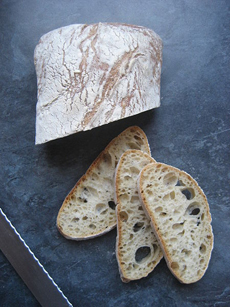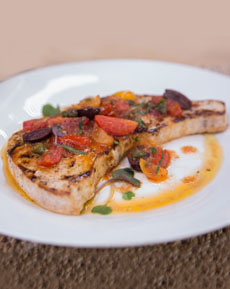|
DON’T TAKE A BITE!
You wouldn’t want to bite into a disk of authentic Mexican chocolate: It’s too gritty. That’s because its traditional use is to be melted into milk or water to make the drink we commonly call hot chocolate. Mesoamericans have been enjoying the chocolate drink since around 1900 B.C.E.!
This rustic style of chocolate has been updated for modern palates by Taza Chocolate, an artisan chocolatier in Somerville, Massachusetts. Chocolate with an attractive grittiness is available in stone ground chocolate bars as well as discs to be melted into Mexican hot chocolate. Check out the wares at TazaChocolate.com.
If you want to make Mexican hot chocolate at home (it’s called taza de chocolate in Mexico), my brand recommendation is the Mexican-made Ibarra. It tastes exactly like the stuff I drank as a child in Mexico: sugary sweet and comfortingly warm. And it’s the most readily available brand in supermarkets (check the Mexican foods department; you can find it in any Latin American market or online).
MEXICAN HOT CHOCOLATE RECIPE
You can make your drink using almost-boiling water, which is typical in parts of Mexico where milk is harder to come by.
But an American palate will probably be happiest going with the familiar: milk.
If you want to really mix it up, try dairy-free yet creamy and flavorful versions with some almond milk or rice milk.
Water makes a thinner, more refreshing (and authentic) cup; milk of any kind (including nonfat) makes a thicker, richer cup.
MEXICAN HOT CHOCOLATE RECIPE
1 disc (approximately 1.3 ounces) of Mexican hot chocolate
6 to 8 ounces of water, milk or milk alternative
Optional spices (see preparation)
Optional for adults: bourbon, rum or tequila
Preparation
1. GRATE a disc of Mexican chocolate with a cheese grater, microplane or rasp. Set aside. While it’s not essential to grate the chocolate before melting it into the liquid, grated chocolate melts faster and is less likely to burn on the bottom of the sauce pan.
2. ADD optional seasonings and spices, including sweetener, if you’re using unflavored Mexican chocolate: grated almonds and/or chiles and cinnamon powder are traditional, but you can get creative (anise, cardamom and so forth).
3. HEAT the water or milk in a deep saucepan to just below boiling. Remove the pan from the heat and whisk the grated chocolate into the liquid.
4. STIR vigorously to dissolve the chocolate and prevent the chocolate from sticking to the bottom of the pan. (The classic Mexican tool is not a whisk but a molinillo, invented in Spain in the 1500s.)
5. ADD any liquids, from vanilla extract (if disc does not contain vanilla) to bourbon, rum or tequila.
|








